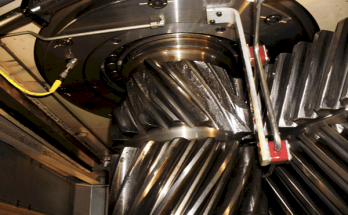Table of Contents
- Introduction to SASE: A Modern Framework for Secure Connectivity
- Decoding the SASE Architecture: Core Components and Principles
- Why SASE? Addressing Modern Security Challenges
- Critical Benefits of Adopting SASE Solutions
- SASE vs Traditional Network Security: What’s Different?
- Key Considerations When Evaluating SASE Providers
- Looking Ahead: The Role of SASE in Future-Ready Networks
Introduction to SASE: A Modern Framework for Secure Connectivity
In the digital age, organizations everywhere are reevaluating how best to protect their users, sensitive data, and mission-critical applications. As cloud computing becomes the norm and remote working accelerates, the boundaries of traditional network environments have all but vanished. To address this complex landscape, a revolutionary framework known as Secure Access Service Edge (SASE) is gaining prominence. The convergence of security and networking under SASE opens doors for IT teams to adapt and scale with agility. But what exactly does this new paradigm offer, and how does it differ from previous strategies? To address these questions, it’s helpful to start by exploring What is SASE? and why it is quickly gaining traction among industry leaders faced with ever-evolving digital risks.
The increasing diffusion of users and devices has created urgent demand for a cloud-first approach to security—one that’s flexible, centrally managed, and effective at defending assets anywhere, anytime. Unlike conventional security architectures, which attempt to enforce a static perimeter, SASE offers an adaptive approach tailored to the realities of today’s diverse and distributed enterprises. Organizations that leverage SASE can ensure that both employees and customers benefit from secure, frictionless access to resources, regardless of their geographical location. This adaptability is crucial as businesses pursue new digital markets and ways of working, underscoring the need for stronger, more nimble tools.
Decoding the SASE Architecture: Core Components and Principles
SASE redefines how networking and security are engineered by orchestrating a tightly integrated stack of advanced cloud-based technologies. Its core foundation relies on Software-Defined Wide Area Networking (SD-WAN), which ensures efficient traffic routing and consistently high performance for all users. On the security side, features like Cloud Access Security Broker (CASB) provide granular visibility and control over cloud resources and applications. Firewall as a Service (FWaaS) enables real-time traffic analysis and blocks potential threats before they reach critical assets. Perhaps most transformative is the adoption of Zero Trust Network Access (ZTNA), which demands continuous verification of user identity and device health with every access request.
The genius of SASE lies in bringing these distinct technologies together under a unified, policy-driven management layer—often controllable from a single dashboard. This empowers organizations to adapt quickly, automate threat responses, and deploy consistent security policies to protect data at every edge. As explained in Network Computing’s breakdown of SASE architecture, the convergence of networking and security under a single framework enhances agility while minimizing complexity. Moreover, centralized policy enforcement shrinks the risk of gaps and misconfigurations that commonly occur with isolated, piecemeal solutions. Whether scaling operations globally or onboarding contractors for a remote project, SASE enables swift and secure expansion without the delays and expense associated with legacy models.
Why SASE? Addressing Modern Security Challenges
- Remote Workplaces: Enterprises must now safeguard employees working from any location, often on a wide array of personal devices and unsecured Wi-Fi networks. SASE’s edge-based controls enable companies to grant secure access to sensitive systems without relying heavily on on-premises equipment.
- Cloud Application Explosion: With the migration of core business applications to multiple cloud platforms, securing access points across SaaS, IaaS, and private clouds has become complex. SASE bridges these environments with consistent access policies and centralized oversight.
- Performance Needs: Today’s workforce demands direct, fast access to data and tools. By routing and securing traffic close to the user rather than funneling it through a distant data center, SASE boosts both cybersecurity and productivity.
Critical Benefits of Adopting SASE Solutions
Organizations that adopt SASE architectures experience a broad spectrum of benefits, encompassing both security and operational advantages. First, there is unified security management, where tools such as next-generation firewalls, secure web gateways, and data loss prevention solutions coexist within a single cloud-managed ecosystem. This simplifies policy application, incident response, and ongoing monitoring, freeing IT to focus on higher priorities. As highlighted by Digitalisation World, this consolidation not only reduces complexity but also improves threat detection and response capabilities across distributed environments.
- Reduced Complexity: Legacy environments often result in overlapping solutions for each new challenge, creating operational headaches. SASE eliminates redundant hardware and the associated maintenance burden, significantly reducing costs while making it harder for cybercriminals to launch attacks.
- Improved Compliance: Heavily regulated sectors, such as finance and healthcare, stand to benefit from SASE’s ability to automate compliance checks, deliver audit-ready logs, and ensure data protection meets current standards.
- Enhanced Agility: SASE enables IT teams to quickly and securely roll out access for branch offices, remote workers, and partners, whether scaling up or integrating with new cloud business applications.
The bottom line? SASE enables businesses to turn security from a roadblock into an enabler of fast, secure growth, while keeping both regulators and digital-native customers satisfied.
SASE vs Traditional Network Security: What’s Different?
Traditional network security revolved around protecting a centralized castle-and-moat perimeter. All internal data and user activity were assumed to be trustworthy once inside the fortress, while everything outside was treated as suspect. However, as infrastructures decentralize and the internet becomes the new corporate backbone, this model is no longer sustainable.
- Decentralized Security: SASE inverts the equation, distributing security policies to the network’s many edges—wherever users, apps, and data may be.
- Identity-Driven: Instead of relying on location-based trust, SASE verifies user identities and device integrity dynamically, establishing least-privilege access in every interaction.
- Native Cloud Integration: With SASE, organizations enjoy consistent, automated protection for users whether they’re operating from headquarters, home, or on the move, with seamless support for all major cloud platforms.
This comprehensive, real-time defense significantly reduces the risk of breaches resulting from lateral movement within the network. In many cases, adopting SASE also improves user satisfaction by removing the slowdowns caused by legacy VPNs and traffic backhauls.
Key Considerations When Evaluating SASE Providers
Selecting a SASE platform is a strategic decision with long-term implications for efficiency, security, and business flexibility. Organizations should prioritize scalability to accommodate growth and new initiatives with minimal disruption. They should also demand a complete set of integrated security features, including real-time threat detection, data leakage prevention, and intelligent traffic steering.
- Scalability: Solutions should be able to flexibly support expansion to new regions, acquisitions, and application migrations, all without compromising performance.
- Comprehensive Security: Seek unified, cloud-delivered platforms proven to protect against advanced cyber threats and multi-vector attacks.
- Cloud Compatibility: Verify that the SASE provider seamlessly integrates with critical SaaS applications and public cloud environments, ensuring policies follow users and data everywhere.
- Ease of Management: Streamlined dashboards, automated reporting, and robust orchestration can empower IT teams to work more efficiently and respond to incidents faster.
Looking Ahead: The Role of SASE in Future-Ready Networks
Looking to the future, SASE is poised to be the backbone of secure digital transformation. As new cloud technologies emerge and cyber threats become increasingly sophisticated, organizations require scalable solutions that can keep pace with business changes. The SASE model ensures that security, connectivity, and user experience grow together, not in conflict. Companies that make the shift now will be better positioned to face tomorrow’s challenges with confidence, able to provide best-in-class service and protection to users across every corner of the digital world.
READ MORE : Dynamics 365 Boosts Customer Service Speed & Efficiency



